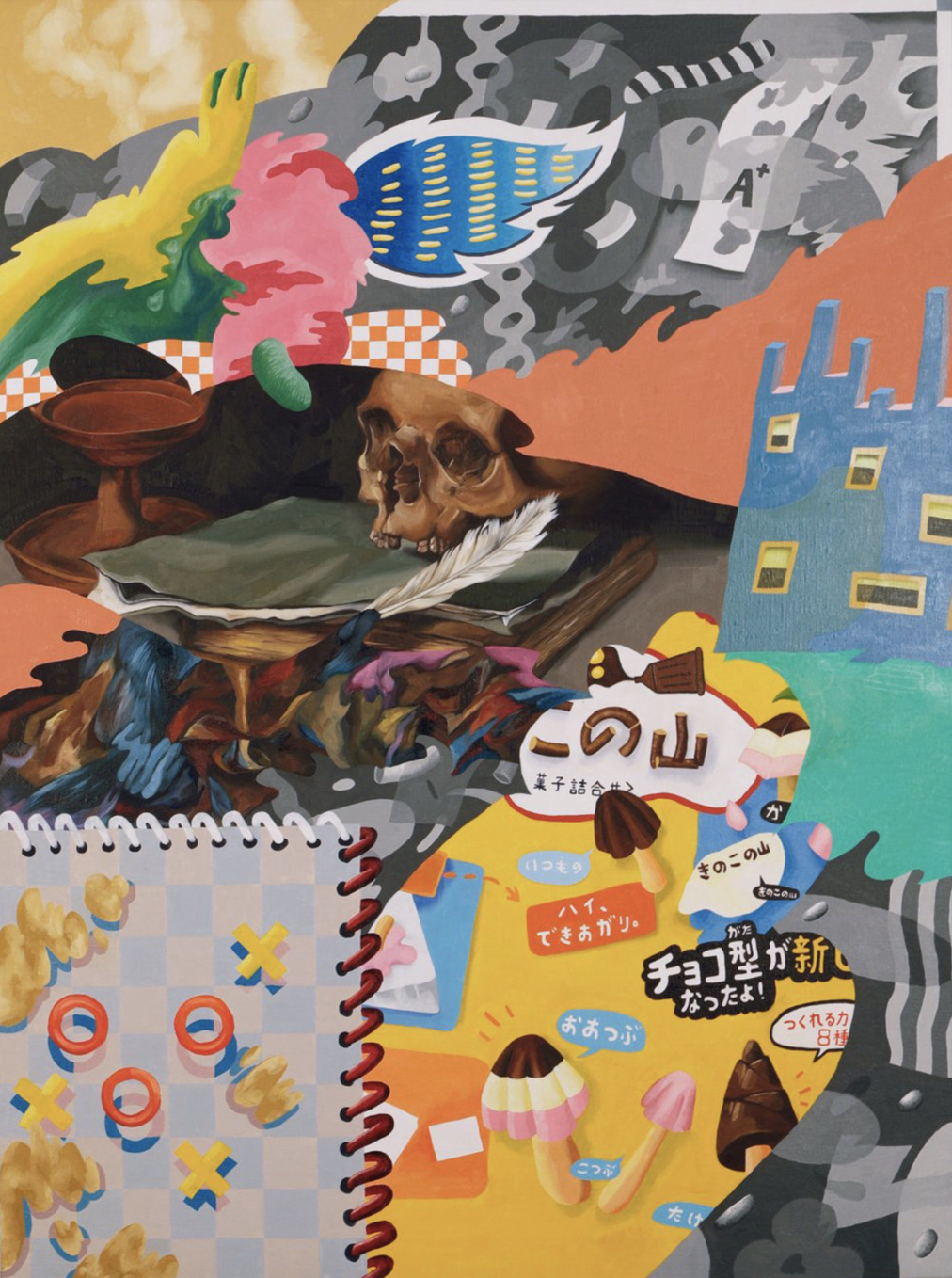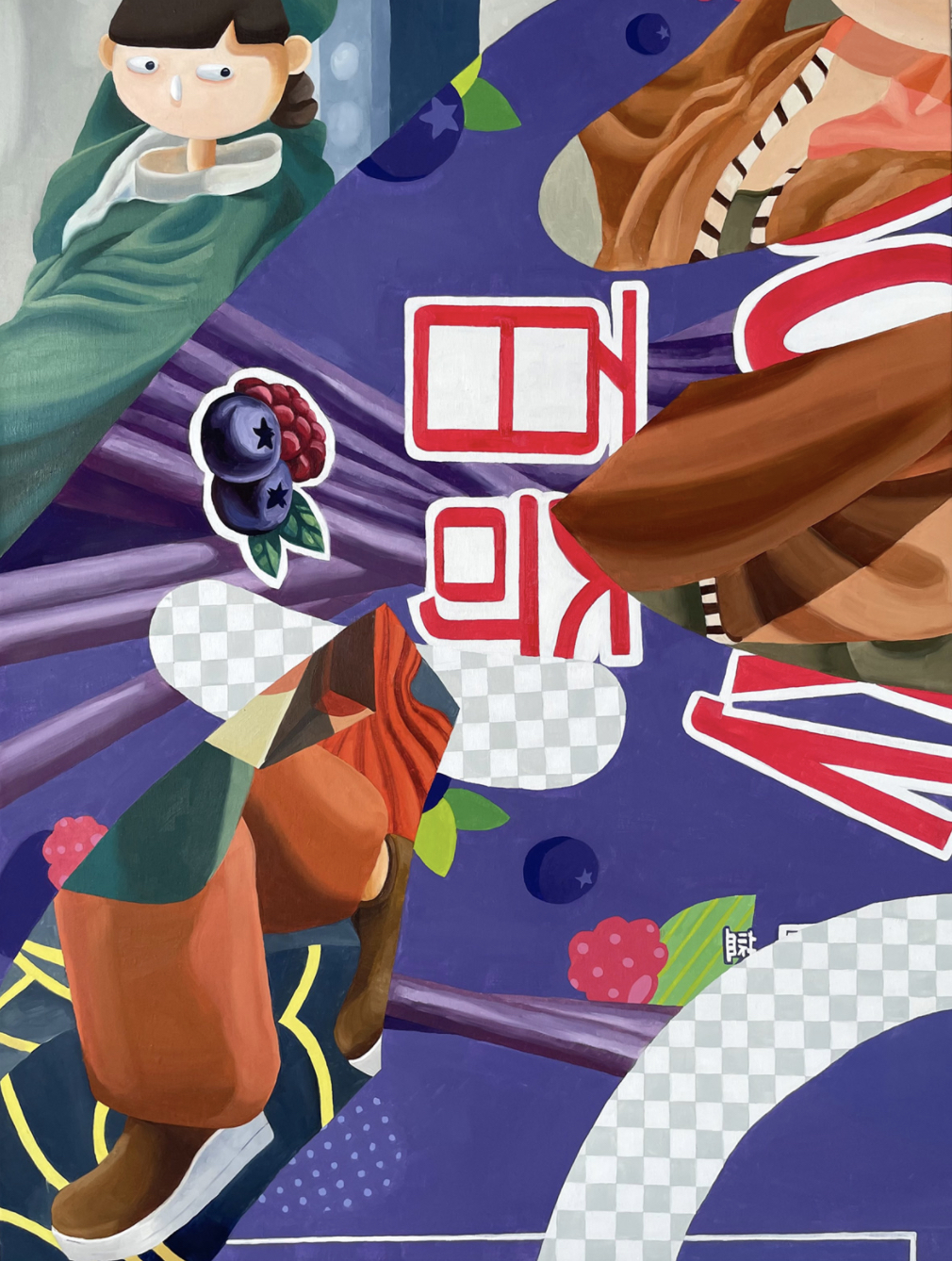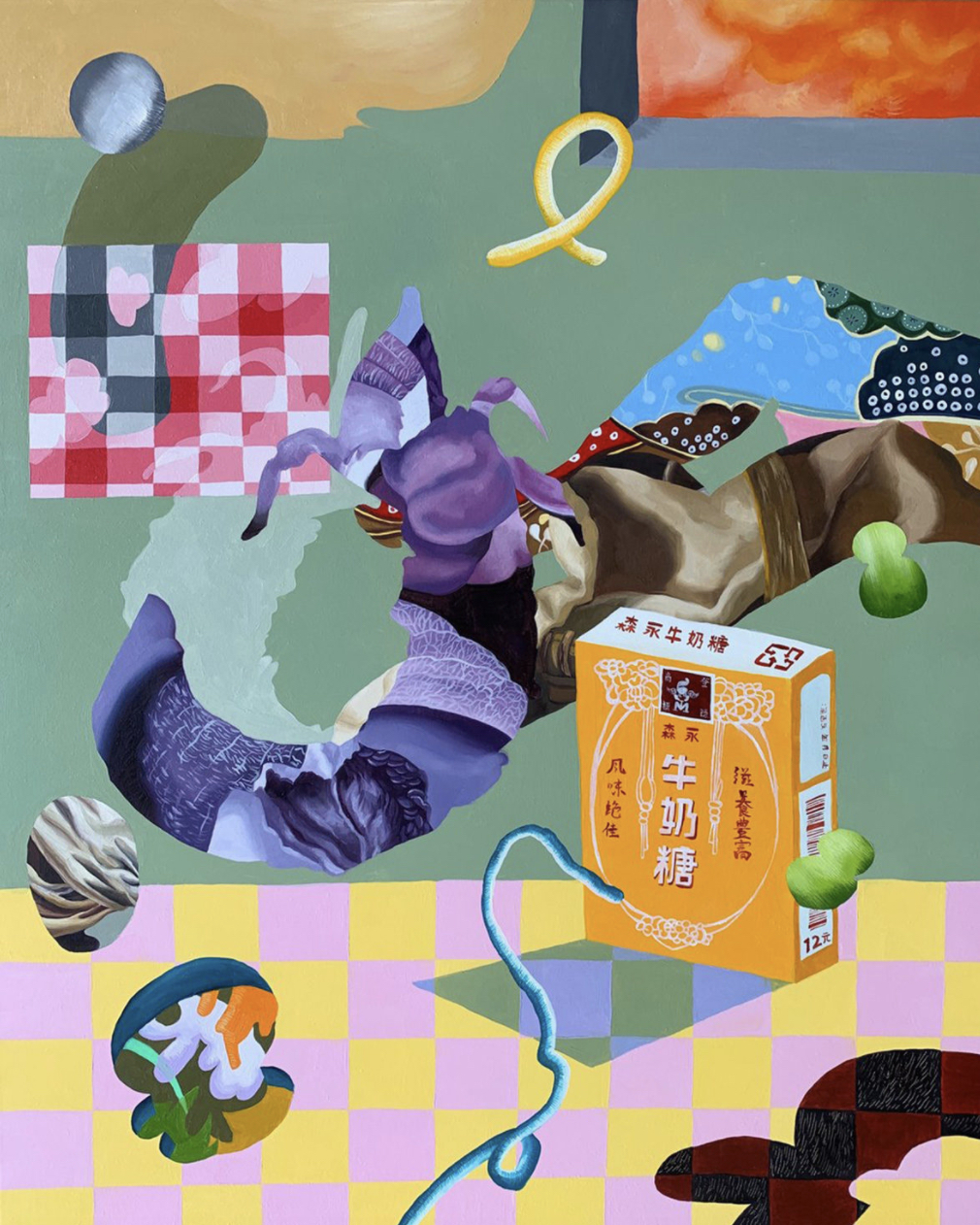Visual indigestion
The riotous canvases of Wang Ziping

This article was originally published on Neocha and is republished with permission.
Popular food packaging design, gaudy patterns, and traditional Asian motifs populate the canvases of Chinese artist Wang Ziping. Every painting is a bombardment of visuals, and rendered through a punchy art style, she dishes forth critique on the information overload of our modern lives.
There is a clear graphic sensibility to Wang’s work, which at first glance, can be easily mistaken for digital collages. Every frame is formed by fragmented visuals arranged with a designer’s eye. But the bold iconography that crowds her paintings often seems indifferent to one another, happily occupying their own sections of the composition. These disparate elements, combined with the striking colors of her palettes, create a contemporary dynamic.


A recurring element that appears throughout her work is a checkerboard pattern, which is typically used to delineate the transparent areas of a Photoshop layer. This familiar motif makes it appear as if parts of her canvases have been erased, which to her, represents the emptiness of the digital world. These patterns, along with the thick daubs of oil colors she liberally paints with, adds an additional sense of depth and dimensionality to the otherwise flat, graphic-style art.


Wang studied illustration at Rhode Island School of Design before majoring in painting at Pratt Institute in NYC. Born in 1995 in Shenyang, she made it onto Saatchi Art’s “Rising Stars: 35 Under 35” list in 2020. She has exhibited internationally, with solo exhibitions at both Unit London, and Galerie Marguo in Paris, and also in group exhibitions in New York, Beijing, and Shanghai.
Her practice is reminiscent of the vivid forms, surreal shapes, and bright pop colors of artist Elizabeth Murray, though it’s considerably less abstract than works by the American painter and printmaker. The young artist’s collage-like creations fall into the realm of pop-expressionism, with visual cues ranging from the historical to the contemporary.
Japanese art has an evident influence on her work. In Melting in Your Paperhouse and The Unmade Object, portraits that remind of the art of Utamaro Kitagawa appear within the folds. Many of her motifs also reflect avant-garde Chinese art, most notably the use of modern packaging, which has been influenced by Chinese pop artist Wang Guangyi. Even though her art education and some influences come from the West, Eastern culture and Chinese artists have been equally important in her creative development.




Growing up as part of Gen Z, she paints fast-moving consumer goods brands as a critical gaze towards a world overrun by intrusive advertising. Ads are so intertwined with life now that they are tied to our collective memories, and oftentimes, can even evoke nostalgia. In The Unmade Object, she reflects on her time in America through a box of Lotus Biscoff biscuits in the composition. In Emotional Yet Purposeful, she stacks layers atop a package of Pocky, a Japanese snack brand popular in China. She also features another Japanese confectionery, Pretz, in The Snowflake That Comes Alive.




In Wang’s paintings, the audience is given an image to decipher, but the painting is open to interpretation. Are these works inward-facing, a way for Wang to express her frustrations with the modern world but conceal her true intentions? Clearly, she is making a comment on advertising and digital media, and how the commercial imperatives behind this modify our reality of the world. Her practice, therefore, is looking to document these modifications—to make sure that we don’t get lost and untethered from what is really important.
These works also question the links between our memory and our notions of identity: how do our memories of the past inform the idea we have of ourselves today? In a world where we are bombarded with adverts from brands that want us to associate them with our happiest moments, Wang’s images show us that our feelings of identity are filtered through this cult of brand.


There is also a childlike quality to Wang’s work, an innocence that brings joy and happiness yet also a subconscious understanding that below the surface there is something unsaid. Perhaps she wants to explicitly express this but is not able or does not want to at this time. Through her paintings, Wang grapples with the concept of transcultural identity and the vagaries of over-commercialization to ask, “What is your reality?”
Website: www.zipingwang.com
Instagram: @ping0_o
Contributor: Misha Maruma
Chinese Translation: Olivia Li
Images Courtesy of Wang Ziping & Unit London






